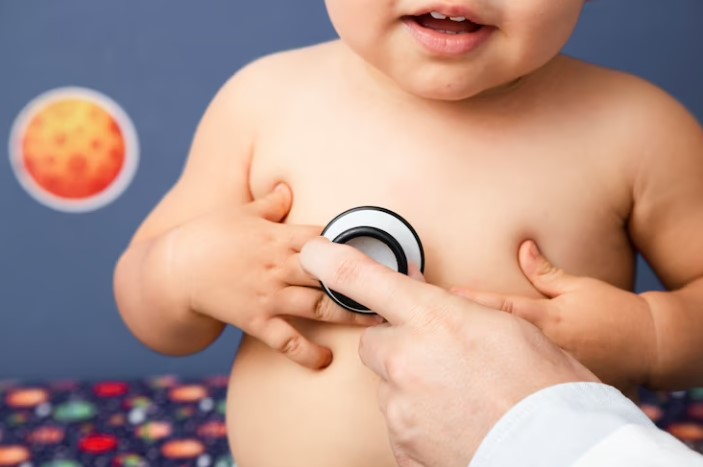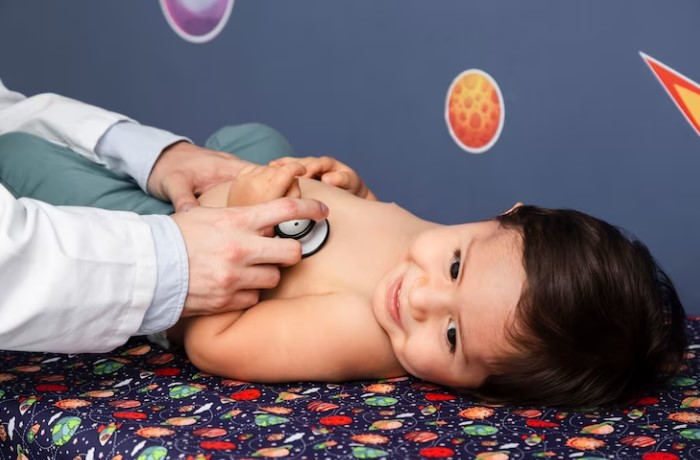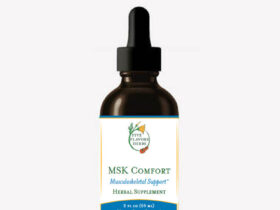As a parent, it’s important to recognize the signs and symptoms of common pediatric diseases and know how to respond to them. In this article, we will discuss some of the most common pediatric diseases, their causes, symptoms, and treatment options.
Common Pediatric Diseases
1. Common Cold
The common cold is a viral infection that affects the upper respiratory tract. Symptoms include coughing, sneezing, runny nose, sore throat, and fever. The common cold is usually self-limiting and resolves on its own within a week to 10 days.
2. Influenza
Influenza, also known as the flu, is a viral infection that can cause symptoms such as fever, coughing, sore throat, body aches, and fatigue. Influenza can be more severe than the common cold and may require medical treatment.
3. Asthma
Asthma is a chronic respiratory condition that causes inflammation and narrowing of the airways, making it difficult to breathe. Symptoms include wheezing, coughing, chest tightness, and shortness of breath. Asthma is often triggered by allergies, respiratory infections, or exposure to irritants such as smoke or pollution.
4. Strep Throat
Strep throat is a bacterial infection that causes inflammation and swelling of the throat and tonsils. Symptoms include sore throat, fever, headache, and swollen lymph nodes. Strep throat is usually treated with antibiotics.
5. Gastroenteritis
Gastroenteritis, also known as the stomach flu, is a viral or bacterial infection that affects the digestive system. Symptoms include diarrhea, vomiting, stomach pain, and fever. Gastroenteritis is usually self-limiting and resolves on its own within a few days.

6. Ear Infection
An ear infection is a bacterial or viral infection of the middle ear. Symptoms include ear pain, fever, and difficulty hearing. Ear infections are more common in young children and are usually treated with antibiotics.
7. Conjunctivitis
Conjunctivitis, also known as pink eye, is an inflammation of the conjunctiva, the thin membrane that covers the white part of the eye. Symptoms include redness, itching, discharge, and tearing. Conjunctivitis can be caused by viral or bacterial infections and is usually treated with eye drops or ointment.
8. Chickenpox
Chickenpox is a viral infection that causes a rash of itchy blisters, along with fever, headache, and fatigue. Chickenpox is usually self-limiting and resolves on its own within a week to 10 days. However, in some cases, complications such as bacterial infections or pneumonia may occur.
9. Measles
Measles is a viral infection that causes a rash of red, flat spots, along with fever, coughing, and runny nose. Measles can be more severe than the common cold and may require medical treatment.
Causes and Treatment Options
Viral Infections
Many pediatric diseases are caused by viral infections. Treatment for viral infections often involves managing symptoms, such as fever, coughing, and runny nose, with over-the-counter medications, rest, and hydration. In some cases, antiviral medications may be prescribed to treat certain viral infections such as influenza.
Bacterial Infections
Some pediatric diseases are caused by bacterial infections. Treatment for bacterial infections usually involves antibiotics to kill the bacteria. However, antibiotics should only be used when necessary, as overuse can lead to antibiotic resistance.
Chronic Conditions
Chronic conditions, such as asthma, may require ongoing treatment, such as medications and lifestyle changes, to manage symptoms and prevent complications.
Recognizing and Responding to Pediatric Diseases
As a parent, it’s important to be aware of the signs and symptoms of common pediatric diseases and know how to respond to them. If your child is showing signs of a pediatric disease, you should:
- Consult with your healthcare provider for proper diagnosis and treatment.
- Follow your healthcare provider’s instructions for managing symptoms and administering medications.
- Ensure that your child gets plenty of rest, fluids, and nutritious foods to help fight off the infection.
- Encourage your child to practice good hygiene, such as washing their hands frequently and covering their mouth and nose when coughing or sneezing.
- Keep your child home from school or daycare until they are no longer contagious.
Conclusion
In conclusion, recognizing and responding to common pediatric diseases is an important part of parenting. Common pediatric diseases include the common cold, influenza, asthma, strep throat, gastroenteritis, ear infections, conjunctivitis, chickenpox, and measles. Causes and treatment options vary depending on the disease, but may involve managing symptoms, taking antibiotics, or making lifestyle changes. If your child is showing signs of a pediatric disease, it’s important to consult with your healthcareprovider for proper diagnosis and treatment. By being aware of the signs and symptoms of pediatric diseases and knowing how to respond to them, parents can help their children recover more quickly and prevent the spread of infectious diseases to others. Remember, prevention is key, so encourage your child to practice good hygiene habits and ensure they receive recommended vaccinations to protect against common pediatric diseases.













